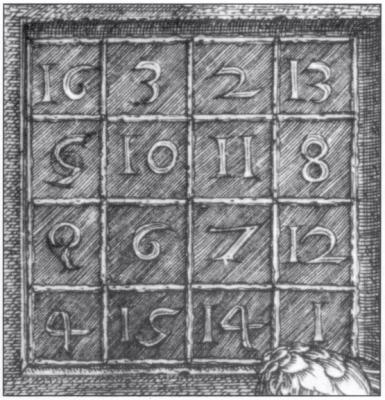Freitag, 23. Oktober 2009
Tunneleingang auf dem Mond entdeckt!
klauslange,19:31h
Es ist gut, dass mittlerweile auch Sonden um den Mond kreisen, die nicht nur von der NASA entsandt wurden und nicht ihr untersteht.
Obwohl die NASA schon mehrere Sonden zum Erdtrabanten schickte, war es aber nun eine japanische Sonde, die eine Entdeckung machte:
Erstmalig wurde ein Tunneleingang auf dem Mond entdeckt, jedenfalls sind es die Japaner, die einen solchen Fund erstmalig melden...
Auf Aufnahmen der japanischen Mondsonde Kahuya haben Forscher um Junichi Haruyama von der japanischen Raumfahrtbehörde JAXA und Carolyn van der Bogert von der Universität Münster ein Loch von 65m Durchmesser gefunden und sehen darin eine Bestätigung dafür, dass es auch auf dem Erdtrabanten unterirdische, von einstiger Lava gegrabene Tunnelsysteme gibt, wie sie zukünftig auch für bemannte Mondstationen genutzt werden könnten.
Interessant ist dabei die Bemerkung der Forscher, dass doch auch die NASA mit dem LRO und deren viel höheren Auflösung diese Endeckung in Augenschein nehmen sollten. Eine versteckte Verwunderung, warum die NASA solche Eingänge noch nicht entdeckte und publik machte? Schließlich würden solche Entdeckungen Gelder für weitergehende Projekte locker machen...
Die offizielle Veröffentlichung steht im renommierten Magazin "Geophysical Research Letters" bevor, wie NewScientist berichtet:
http://www.newscientist.com/article/dn18030-found-first-skylight-on-the-moon.html
Obwohl die NASA schon mehrere Sonden zum Erdtrabanten schickte, war es aber nun eine japanische Sonde, die eine Entdeckung machte:
Erstmalig wurde ein Tunneleingang auf dem Mond entdeckt, jedenfalls sind es die Japaner, die einen solchen Fund erstmalig melden...
Auf Aufnahmen der japanischen Mondsonde Kahuya haben Forscher um Junichi Haruyama von der japanischen Raumfahrtbehörde JAXA und Carolyn van der Bogert von der Universität Münster ein Loch von 65m Durchmesser gefunden und sehen darin eine Bestätigung dafür, dass es auch auf dem Erdtrabanten unterirdische, von einstiger Lava gegrabene Tunnelsysteme gibt, wie sie zukünftig auch für bemannte Mondstationen genutzt werden könnten.
Interessant ist dabei die Bemerkung der Forscher, dass doch auch die NASA mit dem LRO und deren viel höheren Auflösung diese Endeckung in Augenschein nehmen sollten. Eine versteckte Verwunderung, warum die NASA solche Eingänge noch nicht entdeckte und publik machte? Schließlich würden solche Entdeckungen Gelder für weitergehende Projekte locker machen...
Die offizielle Veröffentlichung steht im renommierten Magazin "Geophysical Research Letters" bevor, wie NewScientist berichtet:
http://www.newscientist.com/article/dn18030-found-first-skylight-on-the-moon.html
... comment
klauslange,
Samstag, 31. Oktober 2009, 22:59
weiteren Artikel...
... link
klauslange,
Samstag, 31. Oktober 2009, 23:09
National Geographic...
... spricht sogar über die Möglichkeit der Beherbergung von Mond - Basen in einer solchen Lava - Röhre mit Dachluke:
Moon skylight lunar base
Daraus:
Natural Protection
Andrew Daga, of consulting firm Andrew Daga & Associates, has been researching the feasibility of using lava tubes for lunar bases.
Any standalone surface shelter, whether rigid or inflatable, would be more complicated, heavier, more expensive, and necessarily smaller than a structure designed to sit inside a protective lava tube, Daga said.
"Nothing that we can build on the surface using reasonably available technologies could provide the same protection as the interior of a lava tube," added Daga, who was not involved with the new study.
In addition, such tubes should be safe in the long run, since they've stood the test of time, he said.
Based on a count of nearby craters, Haruyama's team estimates that the skylight's tube was created more than 3.5 billion years ago.
That means any areas of the tube still in good condition are unlikely to collapse anytime soon.
Better Moon Landing Target?
Next steps could include sending a robotic rover armed with ground-penetrating radar to take critical measurements, such as the thickness of the moon cave's basalt "roof."
If the idea of underground shelter gains traction, lava-tube locations could join potential water sources and other factors in the debate over just where people should put down roots on the moon.
In fact, the Marius Hills region was proposed as a landing site during the Apollo era and is now under consideration for NASA's Constellation program, which aims to return humans to the moon by 2020.
"Volcanic regions like the Marius Hills may be good places to find resources on the moon," Haruyama said. That's because the moon's volcanic eruptions created basaltic rock, which could be mined for rare-Earth metals, silicon, and oxygen.
And now, Haruyama said, "we think this cavern could be useful as a lunar base."
Moon skylight lunar base
Daraus:
Natural Protection
Andrew Daga, of consulting firm Andrew Daga & Associates, has been researching the feasibility of using lava tubes for lunar bases.
Any standalone surface shelter, whether rigid or inflatable, would be more complicated, heavier, more expensive, and necessarily smaller than a structure designed to sit inside a protective lava tube, Daga said.
"Nothing that we can build on the surface using reasonably available technologies could provide the same protection as the interior of a lava tube," added Daga, who was not involved with the new study.
In addition, such tubes should be safe in the long run, since they've stood the test of time, he said.
Based on a count of nearby craters, Haruyama's team estimates that the skylight's tube was created more than 3.5 billion years ago.
That means any areas of the tube still in good condition are unlikely to collapse anytime soon.
Better Moon Landing Target?
Next steps could include sending a robotic rover armed with ground-penetrating radar to take critical measurements, such as the thickness of the moon cave's basalt "roof."
If the idea of underground shelter gains traction, lava-tube locations could join potential water sources and other factors in the debate over just where people should put down roots on the moon.
In fact, the Marius Hills region was proposed as a landing site during the Apollo era and is now under consideration for NASA's Constellation program, which aims to return humans to the moon by 2020.
"Volcanic regions like the Marius Hills may be good places to find resources on the moon," Haruyama said. That's because the moon's volcanic eruptions created basaltic rock, which could be mined for rare-Earth metals, silicon, and oxygen.
And now, Haruyama said, "we think this cavern could be useful as a lunar base."
... link
... comment

